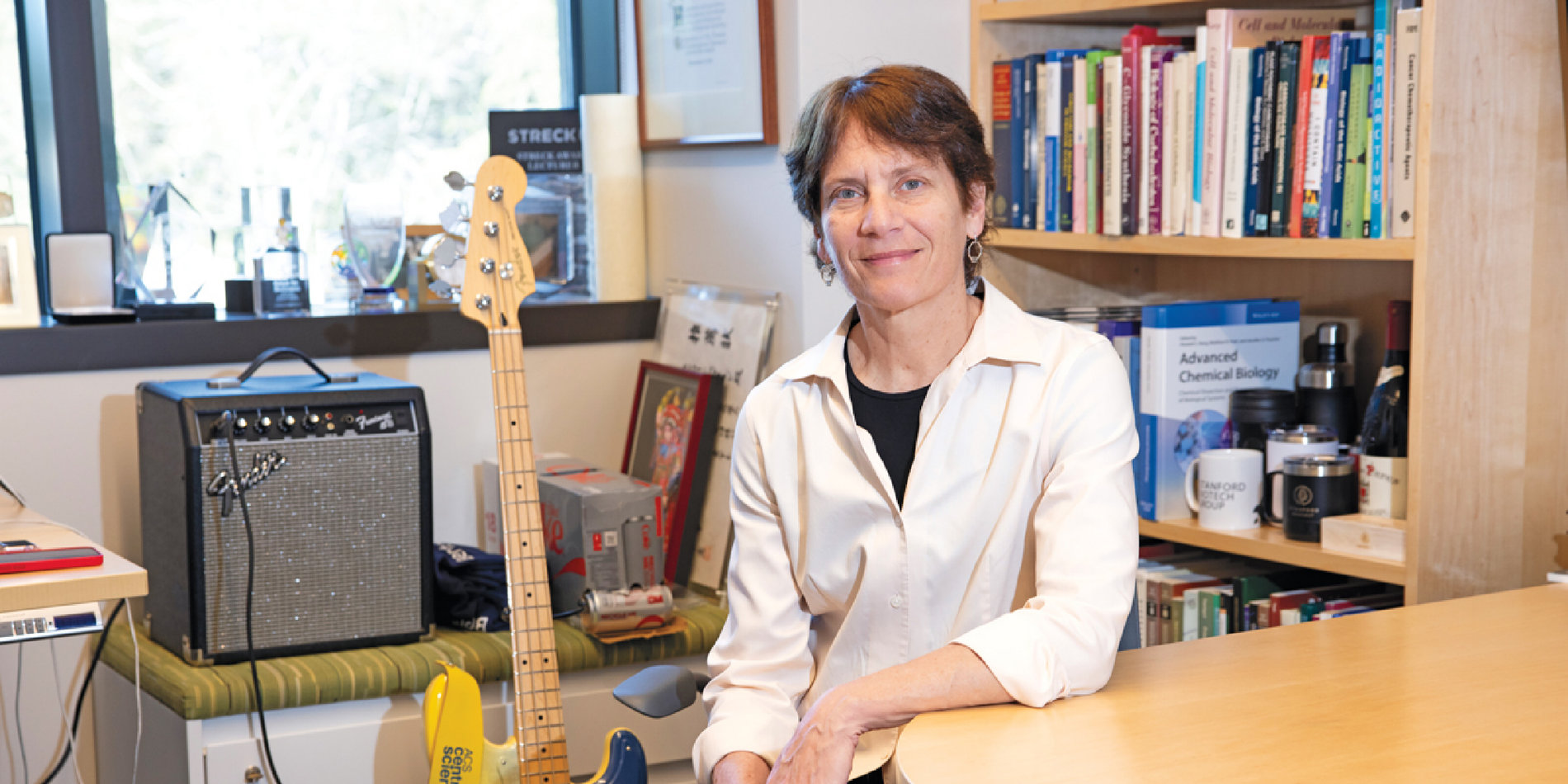More blood proteins cross into the brain than some thought, according to Stanford researchers
The human body is full of barriers—cell membranes, layers of tears on eyes, the skin—designed to keep certain molecules in and others out. Knowing the rules about what kinds of molecules cross these barriers could help scientists understand diseases and deliver drugs to the right places, but one such biological barricade stands out as notoriously hard to cross: the one separating the brain from the rest of the body. Traditional models of brain vasculature, called the “blood-brain barrier,” paint the picture of a reinforced wall between a particularly sensitive organ and the molecules circulating through the blood.

However, new research from Stanford, published in Nature on July 1, recasts this barrier as an interface that allows a large number of different blood proteins into the brain in a regulated manner in mice. The researchers further found that these controlled brain transport processes slow in aging mice and are replaced with less protein-specific ones. Leveraging this new understanding of protein movement across this interface could stimulate basic research and improve drug delivery to the brain, a major hurdle in the treatment of neurodegenerative disorders.
The “blood brain barrier” model—and name—is based on research from the last hundred years using molecular tracers, chemicals that have dyes or light-sensitive tags attached so that scientists can follow where the molecules accumulate after they are injected into the blood. Experiments with these molecules, a lot of which are absent or uncommon naturally in the blood, have pointed scientists to this “barrier” model with “tight” junctions that allow only small amounts (at most 0.1% of the total tracer injected) to squeeze into specific kinds of brain cells.
“With every heartbeat, there is an interaction between the blood and the brain,” said lead author Andrew Yang, a bioengineering graduate student in the lab of Tony Wyss-Coray, professor of neurology and neurological sciences. “We, and others in the field, suspected that previous studies didn’t capture the whole story.”
The problem, according to these researchers, is that most research is limited to a handful of tracers, potentially missing other molecules that might be better at penetrating the brain. They wanted to discover which blood molecules could get into the brain and also explain recent results from their lab showing that young and old blood infusions into mice can slow and accelerate brain aging, respectively. How could these infusions have such a big effect if only few molecules can navigate through the barrier?
To answer these questions, Yang and others in the study turned to the molecules that naturally occur in blood. Looking at them one by one would take too long, so instead they isolated mouse blood and tagged hundreds of different blood proteins all at once. The researchers then injected the labeled blood into mice and waited for evidence of the proteins in the brain.
They found that 2-3% of the labeled plasma proteins ended up in the brain, a large number when compared to the 0.1% observed for most molecular tracers. These proteins even moved across layers of cells to get to harder-to-reach places assumed to be impenetrable based on earlier experiments with tracers.
“We see that there’s this lock-and-key model, where the things that are meant to get into the brain get in quickly and productively,” said Yang, who is also a Chemistry-Biology Interface Fellow through Stanford ChEM-H. This targeted, active transport has been seen previously with a couple of specific proteins, but this is the first evidence suggesting that this mode of transport could be more widespread across many proteins.
Previous models of aging mice have described the barrier breaking down with age or neurodegenerative diseases like Alzheimer’s, yielding holes or “leaky” junctions that allow more molecules to pass through.
Here, the researchers found that the “leakiness” is not only from physical holes. Instead, the protein-specific transport that happens in young brains is lost with age and replaced with protein-agnostic transport. When these nonspecific gates open, they allow only a small quantity of plasma proteins to pass but, without regulation, some of these trespassing proteins are the bad actors not allowed in younger brains. While this alternative mechanism might be a minor contributor to the total amount of protein that gets into aging brains, it could help explain how proteins cross into brain cells even far from physical holes.
A better understanding of protein shuttling into the brain could inform research about brain health and lead to new therapeutic strategies, like using new potential “trojan horse” proteins to ferry drugs in young brains, or stimulating the non-protein specific transport pathways to get a higher dose of drugs into aging brains.
Knowing that a lot of molecular information is moving from the blood to the brain is just the beginning of the story, according to the researchers. “I think Andrew opened up a treasure trove of exciting new questions we can begin to answer with the new tools he has generated,” said Wyss-Coray. “Which proteins make it into which cells in the brain? And what are they are doing there? I can’t wait to find out."
Wyss-Coray is the D.H. Chen Professor II, and is a member of Stanford ChEM-H, BioX, the Wu Tsai Neurosciences Institute and the Maternal & Child Health Research Institute (MCHRI). Other Stanford co-authors include Marc Stevens, Michelle Chen, Davis Lee, Daniel Stähli, David Gate, Kévin Contrepois, Winnie Chen, Tal Iram, Lichao Zhang, Ryan Vest, Aisling Chaney, Benoit Lehallier, Niclas Olsson, Haley Du Bois, Ryan Hsieh, Haley Cropper, Daniela Berdnik, Lulin Li, Elizabeth Wang, Gavin Traber, Carolyn Bertozzi, Jian Luo, Michael Snyder, Joshua Elias, Stephen Quake, and Michelle James.



